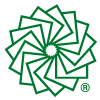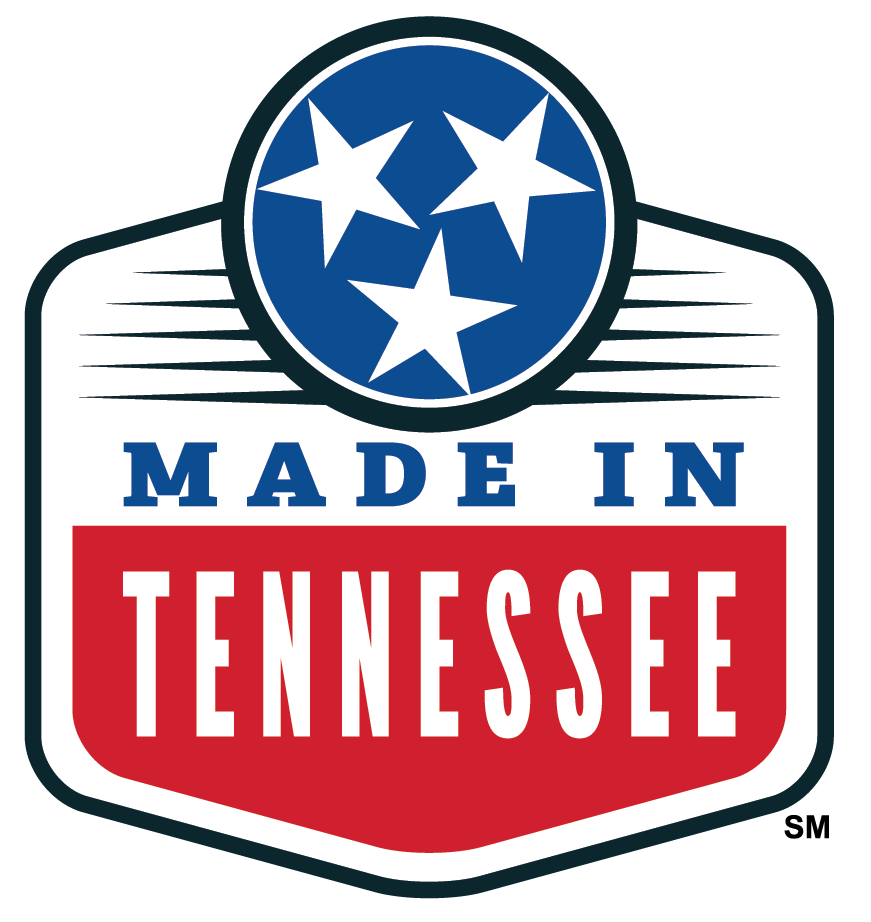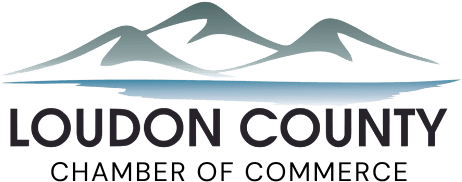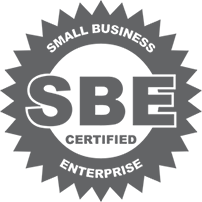Artwork Guidelines
GENERAL GUIDELINES:
Templates are available for all products.
The best recommendation we can give you is to contact us before starting a new art project; we can help you make sure the file is prepared correctly for the particular printing process to be used. If you are submitting your own files, please read the below instructions carefully; following these guidelines will make sure your printed product is manufactured at the highest quality. If you choose to ignore these guidelines we cannot magically make your artwork better.Failure to follow these guidelines could result in additional charges.
Compatibility/Licensing:
• We cannot print from Microsoft files (Word, PowerPoint, Publisher, Excel) as the page formatting often shifts; also, the fonts that are available within Office do not travel with the files and get substituted with other fonts when we output for printing.• We cannot print from Canva, PageMaker or Apple Pages files/pdfs as there are layering and rasterizing problems; if you overlay a color box and/or text with a picture, Canva converts those areas into JPEG images which cannot be output at high resolution and cannot be color-matched. (Also, with Canva, there are some licensing vagueries we have encountered with their "stock" pictures.)
• We can print from Adobe files (Photoshop, Illustrator, InDesign) but make sure to embed all links and set your color profile to US Sheetfed Coated CMYK. (NOTE: Photoshop should only be used for image editing and should not be used to assemble composites with text, etc.; if you have prepared your file this way then you will need to send us the actual Photoshop file with layers intact and not flattened/merged.)
• We prefer PDFs following the guidelines listed below for each type of product.
• Do not compress PDF Files; make sure all options to compress or otherwise reduce file size have been turned off before outputting the PDF file. (We have a PDF Preset for Downtown Digital if you are going to be sending us files regularly.)
• You cannot use pictures/photos/graphics pulled from other websites; you must purchase the picture with a minimum "license for printing up to 100,000 impressions". Do not alter the original image (other than cropping), and do not use AI to generate graphics. If the photo has a "watermark" (i.e., someone's name/brand on the image) you cannot delete that watermark unless you get written permission from the original maker.
• You cannot use fonts downloaded from "free" sites; these fonts are often not licensed, or are no longer compatible with professional output devices. (If the font name ends in ".TTF" or is called "TrueType" it is no longer compatible.)
Resolution/Coloring:
• We print in high resolution (1200dpi - 3600dpi) and require files that use high resolution assets; our printing process will reveal low resolution problems (such as pixelation, blurring, and color shifts) that may not show up on traditional in-office printers. All color raster (dot-based) graphics should be placed at 400dpi at 100%, with no stretching vertically or horizontally. (We can in some circumstances work with 300dpi.) We need 600dpi for grayscale or black graphics.• We print in CMYK (US Sheetfed Coated 2) and therefore RGB-based assets are not recommended as colors will uncontrollably shift. (RGB assets are those typically used for websites, such as JPEG, PNG, and WEBP.) You should use CMYK assets (TIFF, etc.).
• Use vector elements (EPG, SVG) for logos and graphics whenever possible. (Some printing processes, such as promotional items and t-shirts/apparel, require vector.) These elements are easier for us to color match and/or correct. If you are using PMS color swatches then vector is required to appropriately match.
DIGITAL/PRESS:
Anything that is printed in full color on paper or board and then converted by folding, scoring, gluing, etc. Also used for labels, decals, magnets, and all-over printed items such as bags/totes, mousepads, microfiber cloths, etc.
• Use vector elements (EPG, SVG) for logos, graphics, and fonts whenever possible.
• Use CMYK raster elements (TIFF) at 400dpi placed at 100% (no stretching).
• Use PMS Coated swatches (TIFF) even if printing on uncoated paper stock.
• Include a 1/8" bleed on all four sides even if your project does not bleed.
• Include a 1/6" safe area on all four sides so that nothing critical comes too close to the trim edge.
• Include crop marks only; do not include bleed marks, registration wheels, or color bars.
• Heavy Black Areas (including fonts) should be 10|10|10|100 for Digital and 80|80|80|95 for Press. (All other black elements, especially small and/or thin type, should be set to 0|0|0|100.)
• Spot UV Coating or any other foil, 5th color, or special effect should be set to a spot color swatch named "Special".
• Use CMYK raster elements (TIFF) at 400dpi placed at 100% (no stretching).
• Use PMS Coated swatches (TIFF) even if printing on uncoated paper stock.
• Include a 1/8" bleed on all four sides even if your project does not bleed.
• Include a 1/6" safe area on all four sides so that nothing critical comes too close to the trim edge.
• Include crop marks only; do not include bleed marks, registration wheels, or color bars.
• Heavy Black Areas (including fonts) should be 10|10|10|100 for Digital and 80|80|80|95 for Press. (All other black elements, especially small and/or thin type, should be set to 0|0|0|100.)
• Spot UV Coating or any other foil, 5th color, or special effect should be set to a spot color swatch named "Special".
SIGNAGE/WIDE-FORMAT:
Anything that is printed oversize, such as banners and retractables, corrugated signs, booth displays, and wall/window/floor graphics.
• Use vector elements (EPG, SVG) for logos, graphics, and fonts whenever possible.
• Use CMYK raster elements (TIFF) at 300dpi placed at 100% (no stretching).
• PMS Matching is not available on wide format without special handling.
• Special Effects (Spot UV, Metallic or Fluorescent inks) are not available on wide format without special handling.
• Include a 1/4" bleed on all four sides even if your project does not bleed.
• Include a 1/2" safe area on all four sides so that nothing critical comes too close to the trim edge or round corner.
• Do not include any marks (no crop marks or bleed marks, registration wheels, or color bars).
• Heavy Black Areas (including fonts) should be 15|15|15|100. (All other black elements, especially small and/or thin type, should be set to 0|0|0|100.)
• Use CMYK raster elements (TIFF) at 300dpi placed at 100% (no stretching).
• PMS Matching is not available on wide format without special handling.
• Special Effects (Spot UV, Metallic or Fluorescent inks) are not available on wide format without special handling.
• Include a 1/4" bleed on all four sides even if your project does not bleed.
• Include a 1/2" safe area on all four sides so that nothing critical comes too close to the trim edge or round corner.
• Do not include any marks (no crop marks or bleed marks, registration wheels, or color bars).
• Heavy Black Areas (including fonts) should be 15|15|15|100. (All other black elements, especially small and/or thin type, should be set to 0|0|0|100.)
BOOKS/FORMS/VARIABLE DATA:
Anything that is made of multiple pages, with or without a cover, and has some kind of binding.
• Use vector elements (EPG, SVG) for logos, graphics, and fonts whenever possible.
• Use CMYK raster elements (TIFF) at 400dpi placed at 100% (no stretching).
• Use PMS Coated swatches (TIFF) even if printing on uncoated paper stock.
• Include a 1/8" bleed on all four sides on all pages if one or more pages, or the cover, bleeds.
• Include a 1/4" safe area on all four sides so that nothing critical comes too close to the trim edge.
• Allow an additional 3/8" safe area on the gutter side(s) if your book is bound with a hard spine (e.g., spiral, wire, perfect, case, etc.).
• Include crop marks only; do not include bleed marks, registration wheels, or color bars.
• Heavy Black Areas (including fonts) should be 10|10|10|100 on the cover only. All inside pages should be set to 0|0|0|100.
• Spot UV Coating or any other foil, 5th color, or special effect should be set to a spot color swatch named "Special" (available on the cover only).
• PDF Page Count should equal book page count, including blank pages. If you have a spread that crosses two pages it should be prepared on individual pages with appropriate bleeds/margins on each page of the spread. The cover page(s) should be in a separate file.
• Forms are assumed "all parts print the same"; if you need variable form pages then your PDF file should have the appropriate number of pages for all parts of the form (including blank backers), even if some of the pages print with the same artwork.
• Form Numbers should not be included in the PDF file; you can supply a separate file to show number placement (make sure it can be identified as the mockup by appending "_mockup" to the file name).
• Mail Merge can be supplied in Excel or CSV file but must be properly prepared; all rows must have the same number of data-filled columns and cannot contain any special characters (such as tabs or carriage returns).
• Variable Data (other than traditional Arabic numbering) requires special handling; contact us so we can discuss the proper file/setup to achieve your desired goal.
• Use CMYK raster elements (TIFF) at 400dpi placed at 100% (no stretching).
• Use PMS Coated swatches (TIFF) even if printing on uncoated paper stock.
• Include a 1/8" bleed on all four sides on all pages if one or more pages, or the cover, bleeds.
• Include a 1/4" safe area on all four sides so that nothing critical comes too close to the trim edge.
• Allow an additional 3/8" safe area on the gutter side(s) if your book is bound with a hard spine (e.g., spiral, wire, perfect, case, etc.).
• Include crop marks only; do not include bleed marks, registration wheels, or color bars.
• Heavy Black Areas (including fonts) should be 10|10|10|100 on the cover only. All inside pages should be set to 0|0|0|100.
• Spot UV Coating or any other foil, 5th color, or special effect should be set to a spot color swatch named "Special" (available on the cover only).
• PDF Page Count should equal book page count, including blank pages. If you have a spread that crosses two pages it should be prepared on individual pages with appropriate bleeds/margins on each page of the spread. The cover page(s) should be in a separate file.
• Forms are assumed "all parts print the same"; if you need variable form pages then your PDF file should have the appropriate number of pages for all parts of the form (including blank backers), even if some of the pages print with the same artwork.
• Form Numbers should not be included in the PDF file; you can supply a separate file to show number placement (make sure it can be identified as the mockup by appending "_mockup" to the file name).
• Mail Merge can be supplied in Excel or CSV file but must be properly prepared; all rows must have the same number of data-filled columns and cannot contain any special characters (such as tabs or carriage returns).
• Variable Data (other than traditional Arabic numbering) requires special handling; contact us so we can discuss the proper file/setup to achieve your desired goal.
PROMOTIONAL PRODUCTS/APPAREL:
Any product (e.g., pens, plastic goods, etc.) or item of clothing that is not printed using one of the other methods listed above.
• Vector Elements Required (EPG, SVG) for all graphics and fonts.
• Spot Color Swatch(es) should be set to a "close enough" color (e.g., "Dark Blue") unless a specific PMS color is required. (Color matching cannot be guaranteed on all products.)
• Multiple Colors are not always available on every product without special handling.
• Spot Color Swatch(es) should be set to a "close enough" color (e.g., "Dark Blue") unless a specific PMS color is required. (Color matching cannot be guaranteed on all products.)
• Multiple Colors are not always available on every product without special handling.



